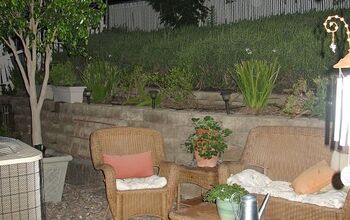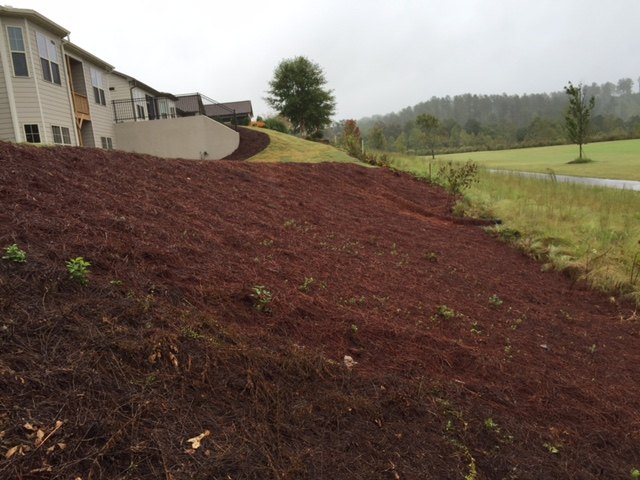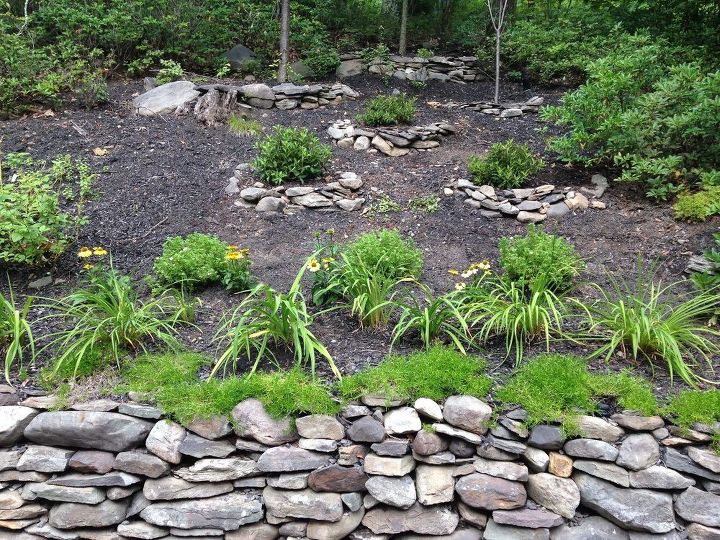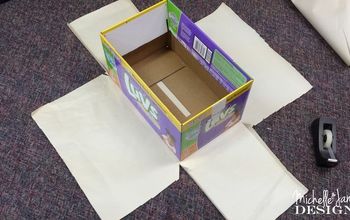Planting a hillside

-
I would plant a dwarf weeping maple, dwarf fountain grass,dwarf zebra grass,and for more color a dwarf blue spruce then for the low plants for more interest try hucheras (coral bells) which are now available in a large range of color.Judging by the picture I am sure you will need more plants, however this was off the top of my head. I would also like to see a very large rock, statue or large piece of driftwood among the garden.
 Janet Pizaro
on Nov 16, 2015
Helpful Reply
Janet Pizaro
on Nov 16, 2015
Helpful Reply -
-
you could bild a garden box and dig it in to the side of the hill so its level like the mians used to do.
 Amanda Parker
on Nov 16, 2015
Helpful Reply
Amanda Parker
on Nov 16, 2015
Helpful Reply -
-
yes you could dig level steps out of the side of the hill and make a wood box to go all around the step that way when it rains your plants and flowers dont get washed away,think of it as diging rely long rely wide steps out of the hill, then just put a wood frame around them
 Amanda Parker
on Nov 16, 2015
Helpful Reply
Amanda Parker
on Nov 16, 2015
Helpful Reply -
-
Exactly! depending of the money you want to spend and the up keep, you could build a retaining wall back fill with dirt and make it more level. They you planting options are basically unlimited! Or you could plant some ground covers, flowers, etc... If you do not go with retaining wall, I would plant ground covers to prevent having to mow that slope.
 Tracey
on Nov 17, 2015
Helpful Reply
Tracey
on Nov 17, 2015
Helpful Reply -
-
I have a steep hill in my yard too. I put a retaining wall across the back of my yard to increase the size of my yard. I put down the landscape netting and then planted rosemary (it has a great root system!) after trying iceplant (which I hated) and red apple (which froze). It doesn't require a lot of water, and is really drought tolerant, which is a plus where I live. I put in drip irrigation with small sprinkler heads on a timer, and only have to trim it back every few years. You could also do the same thing with creeping thyme too. It also doesn't take a lot of water and holds up well.
 Jill
on Nov 17, 2015
Jill
on Nov 17, 2015


 Helpful Reply
Helpful Reply -
-
The lowest maintenance would be grass. Also the most boring, and it doesn't provide anything for pollinators. Plant a wildflower meadow across the whole thing with a light mulch of pine straw or straw. See this webpage for some for-instances: http://www.americanmeadows.com/wildflower-seeds/native-wildflowers/native-southeast-wildflowers Be careful at first not to plant things that are not native to your area. Add shrubs (that take full sun and tolerate some drought) in drifts, sort of interlocking "paisley" shapes of groups of odd-numbers of the same shrubs. Use tried and true growers for your area. Native is nice, but if forsythia is your favorite, have at it. Just remember that you can design the timing of the blooms by using several species, grouping several of each together. The wildflowers will bloom and look good while your shrubs are growing. Figure out how you want to traverse the slope and only walk-on where the path will be. You can lay down a coir or jute matting to start your path. There are also rolls of soil-filled fabric that work as planters. I think they're called erosion control tubes. Fill with soil, plant native plant plugs in them through slits. Must water. Pine straw would cover them if youtr plants grow slowly. Be sure to add some milkweeds near the path! I am a landscape and garden designer, currently working on my MLA, with a concentration in maintaining ecosystem services through beauty.
 Connie Hoge
on Nov 18, 2015
Helpful Reply
Connie Hoge
on Nov 18, 2015
Helpful Reply -
-
Monkey grass would be the easiest. It is evergreen, clumps grow fairly rapidly and it only needs to be trimmed in early spring. No mowing, fertilizing required.
 Virginia
on Nov 19, 2015
Helpful Reply
Virginia
on Nov 19, 2015
Helpful Reply -
-
Monkey grass would work great in places and daylillies for color. Cannot kill neither one! Creeping thyme grows fast stays green all winter, purple small flowers in summer! Lavendar plants would be pretty! Or go the easy but pretty way, wildflowers!
 Tracey
on Nov 20, 2015
Helpful Reply
Tracey
on Nov 20, 2015
Helpful Reply -
-
You can do something really useful for you, beautiful, sustainable and beneficial to our beleaguered pollinators, if you decide to "garden" a bit. If you'd rather ignore it plant the typical cast-iron ground covers and let your lawn service clean it up twice a year.
 Connie Hoge
on Nov 20, 2015
Helpful Reply
Connie Hoge
on Nov 20, 2015
Helpful Reply -
-
I wish it were mine...I would plant a beautiful rock garden
 Judy
on Nov 21, 2015
Helpful Reply
Judy
on Nov 21, 2015
Helpful Reply -
-
I had this exact same challenge myself this summer out at WORK TO RIDE and found best solution happy to share because this really worked for me. I went with...Cranberry cotoneaster (C. apiculatus) makes a good ground cover for erosion control, especially on slopes. Pink summer blossoms are followed by small, red berries in fall. In addition, the fall foliage turns a bronzy shade of red. The shrubs grow 2 to 3 feet tall with a spread of up to 6 feet. From one DIY gardener to another this should be a real good simple foundation plant to start with, then you may put in anything else depending on soil zone and weather in your region. Personally I plant a lot of self-seeders so the work is done for me. I sincerely hope my answer serves you well.
 Suzette Trimmer
on Nov 21, 2015
Helpful Reply
Suzette Trimmer
on Nov 21, 2015
Helpful Reply -
-
Great suggestions by so many of you. Some are more duable than others, but all worthwhile. Now to the 'drawing board' or the 'planting board' as it were. Many thanks!
 Greg von Seeger
on Nov 21, 2015
Helpful Reply
Greg von Seeger
on Nov 21, 2015
Helpful Reply -
Related Discussions
GNATS - How to get rid of them?
Somehow my house and garden got tiny gnats that killed my fuchsia plant and fly everywhere. I have tried ALL the Web recommendations - soap and oil dishes, sand in th... See more
Marigolds growing! Should I pinch the buds?
My marigold plants are growing. I heard that pinching the buds until Autumn will allow them to grow without killing the plant. Is this true?
Growing garlic
Growing our first garlic, should we wait until the leaves are drying out before we pick it? Husband picked first one today along with our first potatoes.
How to keep mice out of your garden?
Hi everyone, I have mice in my garden destroying my vegetables and I have also noticed them in the barn and shed. Please can someone tell me how to prevent them from ... See more
What's the best flower/plant to grow in Texas?
I know that opinions vary, but what's your opinion?!I have great luck w Rosemary plants. Green all year long.
Plants that can grow in heavy clay soil on a hillside
Best way to kill bush/tree after being cut down?
Just moved into a new home. There was a huge thorny bush dragon devouring the mailbox. I slayed the dragon but it is trying to rise up again. How can I make sure it's... See more







